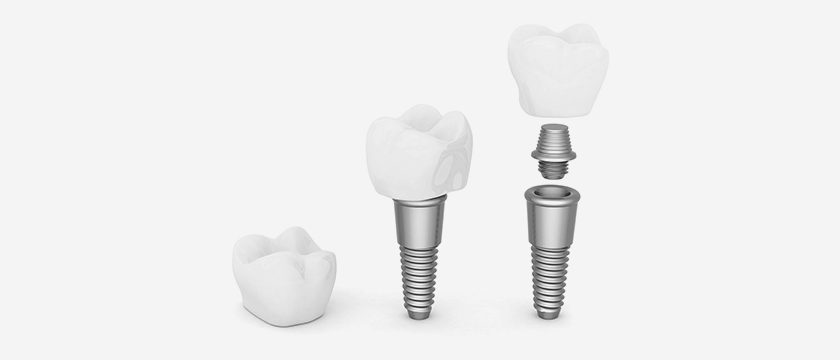Although it is possible to have both dental implants and prosthetic crowns fitted in the same procedure (known as immediate loading) it isn’t always the best option for every patient. So for this reason, we’re going to take conventional implants as a case in point.
In essence, dental implant surgery represents just a small percentage of the dental implant procedure and will typically take anywhere between 15 – 90 minutes depending upon the method used. Computer-guided implant processes like the ones we use here at DDSS/DDII, for instance, take less time because most of the work goes into the virtual planning stages. Therefore, when it comes to the dental implant surgery part, it’s a relatively quick and comfortable procedure for the patient.
Once the implant is in place, however, then the dental implant procedure as a whole is carried out in stages and can be much longer – taking anywhere between 4-9 months to complete.
So with this in mind, let’s take a closer look at the stages involved after implant surgery takes place.
Recovery time
Immediately after dental implant surgery, you’ll enter a period of recovery time. This isn’t really ‘recovery’ in the true sense of recovering from a surgical procedure because, in truth, digitally guided implant procedures cause little or no discomfort.
This method utilises a flapless keyhole surgery approach so there is no cutting of the gum and therefore little disruption at the implant site. As a result, ‘recovery time’ is minimal, lasting only a few days.
Instead, the recovery period in this instance is more about a crucial aspect of any dental implant procedure – osseointegration.
Osseointegration occurs when the bone tissue at the implant site fuses with the titanium root. This process is achieved naturally over 6-12 weeks and creates an immovable foundation upon which a permanent dental crown or bridge is placed.
During this aspect of the dental implant procedure, patients can go about their normal daily lives and should feel no discomfort at all.
Abutment fitting
Once your dentist is happy that bone fusion has taken place then the next stage is to fit the abutment.
The abutment is a socket-shaped component designed to connect the permanent restoration to the implant.
It also acts as a miniature shock-absorber cushioning the force of a bite so that the implant itself doesn’t take the full force of the impact.

Sometimes, this is done at this stage of the dental implant surgery but typically, the placement of the permanent crown is done at a later date to allow for the abutment to fully settle. This part of the process doesn’t require further dental implant surgery as the abutment is already exposed.
How long does dental implant surgery take? Overall timings
If you take into account the overall dental implant procedure from the initial consultation right through to the dental implant surgery and the final placement of the permanent crown, then it’s easy to see how the process takes anywhere between 3-9 months. However, much depends upon the circumstances of the individual and their healing capabilities.
If, for instance, a patient needs a bone graft or a sinus lift prior to implant placement then this can add on a significant amount of time to the process as time is needed for the surgical site to fully recover – typically patients can expect to add on another 4-8 weeks
The good news about computer-guided implant restorations is that placement and positioning of the implant are extremely accurate often to within less than a millimetre of the planned positioning. This means that an experienced dentist can place a dental implant in less bone so you might not necessarily need a bone graft or sinus lift before implant placement.
Lifestyle habits, medical problems and other dental issues
Finally, lifestyle habits like smoking, medical problems like diabetes or dental problems like gum disease can also affect the time needed to complete the dental implant process. Both smoking and diabetes have been proven to affect the rate and speed of bone growth. Therefore, if a patient does smoke or has diabetes, then they will be assessed for eligibility on a case by case basis. Smokers, for instance, will be asked to quit for the duration of their treatment to ensure the best chance of bone growth and diabetes patients will need to show that their condition is under control.
Likewise, because dental implants need to be placed into healthy gums and bone to ensure the best chance of success, it stands to reason that those patients with gum disease will need to ensure that any problems are dealt with first before dental implant surgery can take place. Naturally, this will add further time to the dental implant procedure.
So there you have it…
Hopefully, we’ve answered in detail the question “how long does dental implant surgery take?” and what can affect it in terms of timescale.
If you would like to know more about your specific situation or dental implants in general, then book a consultation with the team at the Digital Dental Implants Institute (DDII). We can give you an instant answer as to whether you are eligible and how we can help you to restore your smile.
Call us on (02) 8294 8656 to schedule an appointment today!
Note: Any surgical or invasive procedure carries risks. Before proceeding, you should seek a second opinion from an appropriately qualified health practitioner.






